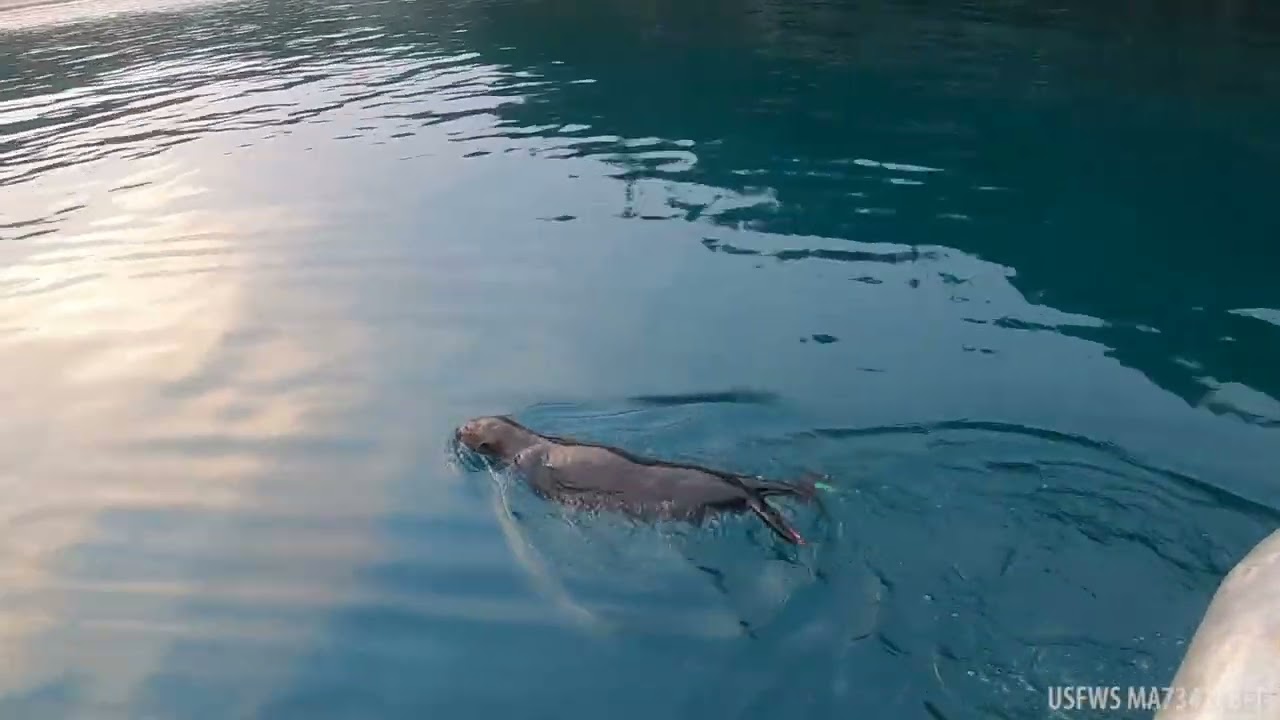- The journey of a juvenile sea otter from injury to release highlights the complexity of marine wildlife rehabilitation and its challenges.
- Rehabilitation efforts involve a multidisciplinary approach, emphasizing veterinary science, zoology, and animal behavior specialist knowledge.
- Wildlife conservation practices are essential for species like sea otters facing habitat degradation and human-caused trauma.
- Zoo management plays a vital role in wildlife rescue and education, aiding public understanding of environmental conservation.
- The successful rehabilitation and release of sea otters set a precedent for future marine wildlife recovery programs.
The story of a juvenile sea otter released back into the wild after overcoming facial trauma is a testament to the resilience of wildlife and the dedication of conservationists. Found in Alaska’s chilly waters, this sea otter faced a grim reality. Sea otters, known to the scientific community as Enhydra lutris, are vital marine ecosystem participants. As keystone species, they maintain the coastal balance by controlling sea urchin populations, which, left unchecked, can devastate kelp forests. Unfortunately, sea otters are also extensively vulnerable to environmental hazards and human-induced injuries.
Facial trauma in sea otters can arise from various factors, such as predatory attacks, entanglement in fishing gear, boat strikes, or oil spills. In this case, the young sea otter’s injury was severe enough to necessitate immediate human intervention for its survival. The injury’s treatment required a sophisticated combination of veterinary care and an understanding of marine mammal behavior. The otter was transported to a well-equipped facility to offer a controlled environment catering to its specific recovery needs.
Rehabilitation of marine wildlife, particularly sea otters, is an intricate process. It involves veterinary science, zoology, behavior studies, and environmental science. Each rehabilitation stage is vital, from the initial assessment and medical treatment to dietary moderations and eventual reintroduction to the wild. Medical care included pain management, wound cleaning, and possibly surgical intervention, emphasizing the veterinaries’ profound role. Veterinarians must have a comprehensive grasp of sea otter anatomy and physiology and an adeptness in handling their unique medical needs.
Furthermore, nutritional management is crucial, as sea otters require high-calorie diets to maintain body temperature in cold waters. Their diet during recovery must mimic what they’d consume in nature, demanding a nutritional balance that supports their healing process without compromising their innate feeding behaviors. Observations and techniques integrated by behaviorists are pivotal to ensure that once released, the sea otter can resume its role and activities within its natural habitat.
The rehabilitation journey of this sea otter also spotlights the broader significance of wildlife conservation. Protecting sea otters extends beyond individual welfare; it pertains to preserving entire marine ecosystems. Conservation efforts are critical in areas such as Alaska, where sea otter populations have historically fluctuated due to hunting, oil spills, and habitat encroachment. Conservationists work tirelessly to address these pressures, developing strategies to mitigate human impact on sea otter populations and their habitats. Public awareness campaigns and education also form part of this mission, elevating the sea otter to a flag-bearer of marine conservation.
In parallel, the role of zoo management in such rehabilitation efforts cannot be overstated. Zoological institutions provide crucial support in terms of resources and expertise, often collaborating with conservation organizations and government bodies. As centers for education and research, zoos serve as bridges between the public and the intricate world of wildlife conservation, promoting awareness and engagement. The successful rehabilitation and release of sea otters exemplify the critical role that zoos play in fostering public understanding and support for environmental stewardship efforts.
Finally, the release of the rehabilitated sea otter into its home waters marks the culmination of a long and challenging journey. This milestone underscores the importance of continuity in conservation efforts and the need for ongoing monitoring post-release to ensure the otter’s successful reintegration into the wild. It sets a benchmark for future endeavors in marine wildlife recovery and emphasizes the collaborative effort required to tackle environmental challenges.
The tale of the juvenile sea otter illustrates the intricacies of marine mammal rehabilitation, the indispensable role of conservation and zoo management in wildlife preservation, and the resilience of nature, inspiring future conservation efforts across the globe. This pivotal case serves as a model for similar rehabilitation projects, embodying the commitment and passion required to protect our planet’s delicate ecosystems.
*****
Source Description
Check out footage from Phantom the northern sea otter’s release back into Resurrection Bay! Phantom was admitted to the ASLC Wildlife Response Program with significant facial trauma, but his rapid rate of healing has impressed the whole team. We’re thrilled to give this patient another chance to thrive in the wild.
*Phantom has been fitted with red and green flipper tags for identification. If you are in the Seward area, please let us know if you spot him!


